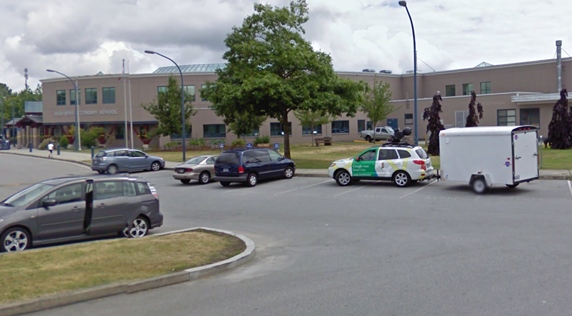In spite of seismic upgrades running under budget at one Richmond school, escalating construction costs could increase other budgets, an engineer told school trustees last week.
Frank Geyer, executive director of planning and development with the Richmond School District, gave a Sept. 26 progress report on the four schools with upgrade projects underway and the three more with upgrades being evaluated for feasibility.
The modifications to the existing structures are being made to help schools cope better in the event of an earthquake.

Geyer described what they’re doing as creating a “waffle pattern” using beams to make sure the buildings don’t get swallowed by the earth during liquefaction. It’s a phenomenon that happens when soils that are sandy, loose or saturated with water lose their stiffness during an earthquake and turn to a quicksand-like substance that can engulf buildings.
“We’re literally building a concrete ring around the school that stiches the building together,” he said. “So the building, if [the soil] liquefies, will float. It’s like building a big concrete raft. That’s how you deal with liquefiable soils.”
In September, John Horgan announced an additional $16 million in funding for seismic upgrades at 63-year-old Tait elementary and 58-year-old Ferris elementary.

Ferris, Richmond’s largest elementary school, will need fewer updates that originally anticipated, Geyer said, because the soil is better quality than they thought. That allows him to trim 10 months from the construction timeline and save on costs. The project’s budget is $6.26 million and is expected to be completed by Aug. 2020.
Tait’s entire building needs upgrading, and construction could start in May 2019 to be completed in August 2020. That school’s upgrade budget is just under $5 million.

Construction on Hugh Boyd secondary should also start in spring 2019. They’re making upgrades to the structure as well as to its underground foundation, but the newest wing of the school doesn’t need to be touched. Along with seismic upgrades, they’re also adding a new technology education wing which will house a computer-aided drafting lab, a media editing room and a “maker space.”
The school’s capacity is also being reduced by 100 students to reflect community need. Investment from the province came down in November 2017 for the project that’s now costed at $8.4 million.
The seismic upgrade and addition at William Cook elementary is the most expensive of all the projects underway, with a budget of $14 million. The board has contributed $1 million, with other funding coming from the Capital Plan and the Annual Facilities Grant.

The entire building is at high risk of liquefaction. The original school building will be demolished and replaced by a single-story addition to the rear, which will expand the school by four classrooms.
Trustee Debbie Tablotney said she was relieved to see the progress in protecting schools against earthquakes.
“At least it’s moving along and the wheels aren’t stuck anymore,” she said.
Geyer mentioned a problem across Metro Vancouver where companies bid a project at a certain price, but then costs escalate between eight and 10 per cent during construction. But he was confident that the board’s reserve and inflation budgets could cover those costs.
Officials are still evaluating the feasibility of upgrade projects on three additional schools: Mitchell elementary, Tomsett elementary and Manoah Steves elementary.
In total, 27 of the city’s schools were deemed at high seismic risk in the board’s Capital Plan. David Sadler, spokesperson for the school district, said the parents can expect a response from the Ministry of Education about the next seismic projects at the end of October.



